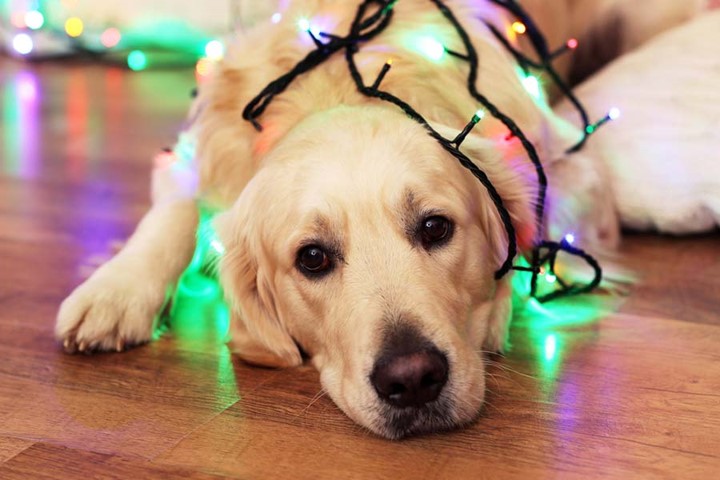7 Ways to Protect Your Pet From Electrical Hazards

One of the biggest hazards in the home is your electricals, and this is particularly a concern when you have pets. Whether you leave your phone plugged in overnight to charge, or turn the washing machine on to do a load while you duck down the shops, there are plenty of seemingly innocuous things you can do to avoid a major electrical or potential fire hazard if your pet becomes entangled in the cords, or decides to chew on them.
Here are several things you can do to make your electricals much safer for your pet without having to stop using power completely.
1. Use good equipment
Don’t skimp when buying power cords, extension cords, or anything else that you use for your electronics. Yes, it can be a pain to pay a premium for something as uninspiring as a phone charger cord, but cheaper cords are much more likely to create sparks or overheat. So because cords like these are generally exposed in the house, you don’t want your pets able to get near faulty ones that could cause injury. You can even pay for cords that have a bitter agent in the material to discourage your pet from chewing on it.
2. Don’t leave electricals unattended
Fans, heaters, and free-standing lights and lamps are all items that are easy to forget to turn off. But if you leave the room or house with these still switched on, you’re creating a potential hazard for your pet. These devices can fall over easily if a pet is running inside the house, and at that point they become a fire risk – a major issue if you’re not home.
3. Keep cords away from your pets
You’ll want to do this anyway because power cords are unsightly. But tying several cords together and placing them behind the television or computer is the way to go – again, though, make sure you then restrict your pet from getting to them.
4. Unplug cords when not in use
The temptation is always to leave a device that you use regularly, such as a television, plugged in when you’re not using it. But it only takes a single accident while you’re asleep during the night and your pet is wandering around for an electrocution or fire to happen without your knowledge.
5. Have an electricity-free area
Create an area in the home that’s free from power outlets and cords where you can place your pet when necessary. You may well want to allow your pet to roam around the house when you’re around and can supervise, but for those times when you do need to duck out and leave the pet alone in the home, a dedicated area with no access to power cords is the safest approach to prevent accidental electrocution or fires.
6. Train your pet
If you teach your pet that certain areas in the house with power cords or outlets are off limits, they’re going to be much less likely to go to those areas. You’ll firstly need to understand how to train your particular pet. Cats respond negatively to a bitter agent being applied to an area, and so they’ll tend to avoid a space if you spray it with citrus spray. Smaller animals like rabbits, ferrets or guinea pigs will be warned away by loud noises, like claps or thumps, being made when they go close to the area.
Also make sure your pets won’t get bored when you’re not around. Ensure they have toys to play with and, in the case of animals that like to chew, make sure they have plenty of chewing food or objects so they don’t go looking for something in the house to chow down on, because that will often lead them to a power cord.
7. Also consider outdoor electricals
If you have a pet that likes to dig, for example dogs or rabbits, make sure they’re not digging in areas where there are underground electrical or cable lines. Or alternatively make sure the cables are deep enough that your pet can dig safely.
What to do if your pet becomes electrocuted
Sometimes accidents will happen, no matter how careful you are. Responding as soon as possible is critical in ensuring your pet will survive the ordeal. The first thing to do is remove the threat of further electrocution from around the pet, but understand they’re going to be frightened and in pain and will potentially lash out.
Next you need to secure the pet as comfortably as possible. If they’re trapped in cords, work with someone to untangle them, and then take them to the vet right away. Depending on how significant the electrocution is, your pet could be experiencing anything from mild burns through to heart problems or liquid filling up in the chest. This is why you need to work quickly.
Finally, make sure you’ve put aside the money you need to cover the vet trip. Depending on the severity of the accident, a trip to the vet for electrocution could cost thousands of dollars, and even if you have pet insurance, this kind of accident might not be covered.
The best plan is prevention
If you manage your house and pets well, you can greatly minimize the risk that electrical power presents to them. For more information on electrical safety in the home, whether with regards to pets specifically or in general, contact the experts at Linc Electricians. We’ll be more than happy to walk you through best practice and suggest courses of action that you can take.



